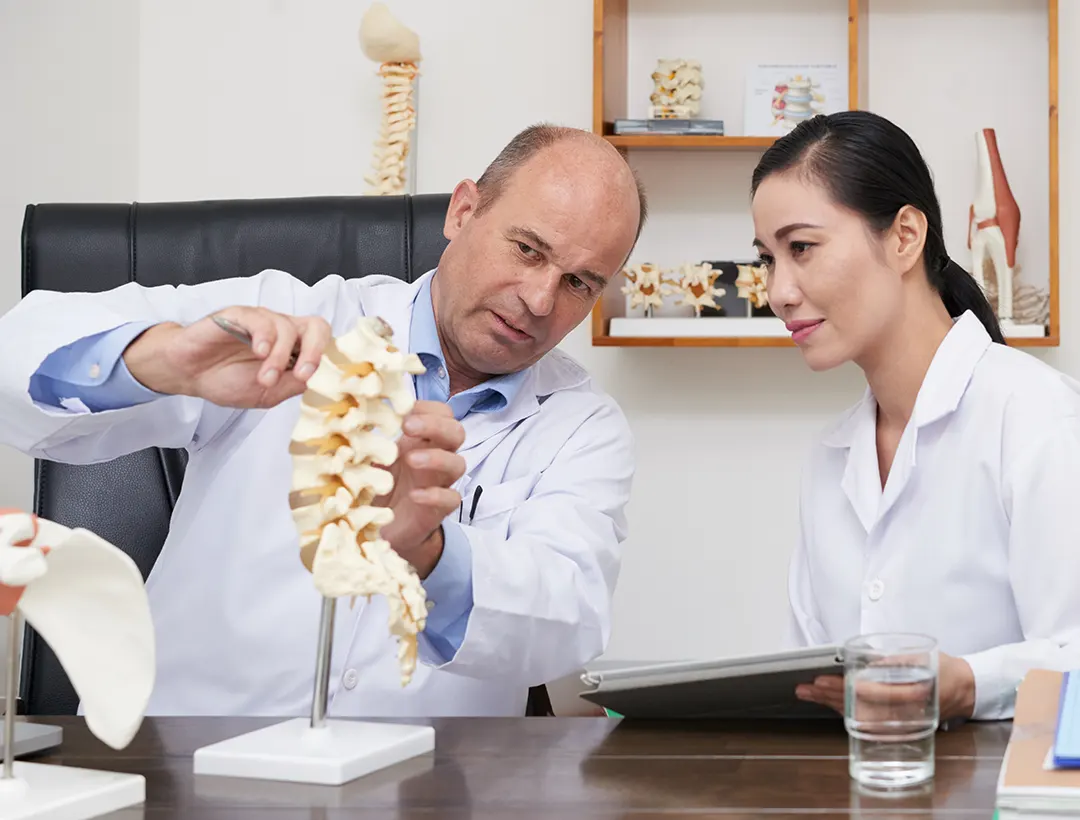What is Stem Cell Therapy?
Stem cells are the body’s “master cells,” capable of developing into various specialized cell types. In stem cell therapy for back pain, these cells are extracted from your body (bone marrow or fatty tissue) or donor sources and injected into the damaged areas of your spine.
How Does it Work?
The injected stem cells have several potential benefits:
- Tissue Repair: They may differentiate into cartilage, bone, or other tissues, aiding in the regeneration of damaged structures in your spine, like discs or facet joints.
- Reduced Inflammation: Stem cells possess anti-inflammatory properties, potentially helping to soothe pain and inflammation associated with conditions like arthritis or herniated discs.
- Improved Healing: They may stimulate the body's natural healing processes, promoting tissue repair and regeneration.

Conditions Stem Cell Therapy May Address

This therapy holds promise for various back pain conditions, including:
Degenerative disc disease (DDD)
Herniated discs
Facet joint syndrome
Sciatica
Spinal stenosis
Benefits of Stem Cell Therapy for Back Pain
Stem cell therapy for back pain is an evolving field with the potential to revolutionize the treatment of various spinal conditions. While research is still ongoing, there are several potential advantages associated with using stem cell therapy for back pain:
Tissue Regeneration
Stem cells have the unique ability to differentiate into different cell types, including those found in the spine such as disc cells and nerve cells. This regenerative potential holds promise for repairing damaged or degenerated spinal tissues, such as intervertebral discs.
Reduced Inflammation
Back pain is often associated with inflammation in the affected area. Stem cells have anti-inflammatory properties that can help reduce inflammation, providing relief from pain and creating a more favorable environment for healing.
Pain Management
Stem cells release bioactive molecules and growth factors that may modulate pain signals. This can result in effective pain management for individuals suffering from chronic back pain, potentially reducing the need for conventional pain medications.
Minimally Invasive Procedure
Stem cell therapy for back pain is typically performed as an outpatient procedure and is minimally invasive compared to traditional spinal surgeries. This can lead to shorter recovery times, reduced scarring, and a lower risk of complications.
Potential to Delay or Avoid Surgery
Stem cell therapy offers a less invasive alternative for individuals considering back surgery. By promoting natural healing processes, stem cells may help delay or even avoid the need for surgical intervention.
Personalized Treatment
Stem cell therapy can be personalized for each patient. Autologous stem cells, harvested from the patient's own body, are often used to reduce the risk of rejection or adverse reactions. This personalized approach may enhance the effectiveness of the treatment.
Improved Functionality
Stem cell therapy aims to promote tissue repair and regeneration, potentially leading to improved functionality of the spine. This can include enhanced range of motion and flexibility, contributing to a better quality of life for those experiencing chronic back pain.
Long-lasting Effects
Stem cell therapy has the potential to provide long-lasting relief by addressing the underlying causes of back pain rather than just managing symptoms. This may result in sustained improvements over time.
